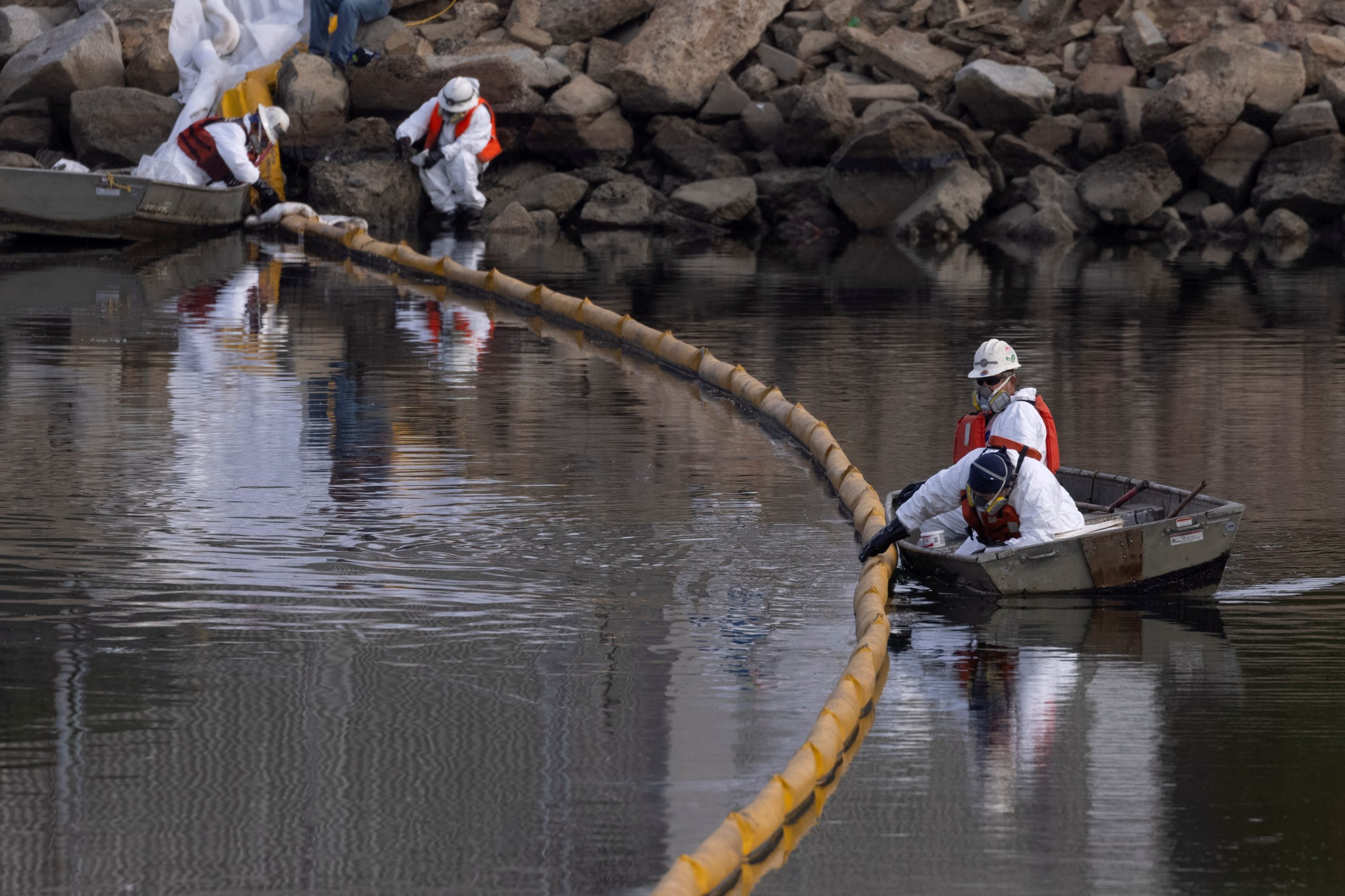
[elfsight_social_share_buttons id=”1″]
More oil from a massive offshore spill landed on the southern California shore on Monday, with beaches closed and dead fish and birds washing up on shore as officials investigated whether a ship anchor striking a pipeline could have triggered the leak.
Crews dressed in white coveralls and helmets raced against an approaching storm as they cleaned damage from 3,000 barrels (126,000 gallons) of oil that spilled into the Pacific Ocean in recent days from a pipeline connected to an offshore facility owned by a unit of Amplify Energy Corp.
Amplify CEO Martyn Willsher said at a news conference on Monday it was possible a ship anchor could have struck the pipeline. Earlier, he said the line was shut and its remaining oil removed. The company’s shares plunged 44% in heavy trading.
Dozens of container ships have been stranded off the coast recently, awaiting their turn to enter the port. The Coast Guard is assessing whether one of their anchors could have hit the line, said Captain Rebecca Ore. “It is possible they would transit over a pipeline,” she said.
As the crews worked to clean areas near the beach and wetlands running inland from the ocean on the eastern side of the coastal highway, residents told local news stations they had smelled a foul odor on Friday and were concerned about the lack of attention to the reports.
Willsher said Amplify received no reports of a smell on Friday. The pipeline and oil platform are run by a California subsidiary of the Houston-based offshore crude oil producer.
Newport Beach Fire Chief Jeff Boyles said the department received multiple reports of a foul odor Thursday and Friday, but such reports are common and the city received no official report of an oil spill until midday on Saturday.
The timing of when reports were received will be one of the issues investigated, said Orange County Supervisor Katrina Foley. “Mariners and other were reporting they saw a sheen on Friday night,” she said at the press conference.
Officials deployed 2,050 feet (625 meters) of protective booms, which help contain and slow the oil flows, and about 3,150 gallons had been recovered on Sunday, the U.S. Coast Guard said.
Amplify’s Willsher said the company has identified an area that could be the source of the leak, which divers will review. However, Orange County District Attorney Todd Spitzer said Amplify’s divers should not go near the pipeline without supervision from independent investigators like the U.S. Coast Guard.
“The company should not be responsible for leading its own investigation with respect to the hundreds of millions of dollars of devastation to our environment and our economy,” Spitzer said.
Huntington Beach, about 40 miles south of Los Angeles, had 13 square miles of ocean and portions of its coastline “covered in oil,” said Mayor Kim Carr. The town, which advertises itself as Surf City USA, is one of the rare places in Southern California where oil platforms are visible from the beach.
Among the areas threatened was the Magnolia Marsh, a wetland that was rehabilitated after a local conservancy bought the land in 2008. Up to 90 bird species use the area each year, including eight to 10 that are either endangered or threatened, officials have said.
Huntington Beach pier, a popular surf spot, was closed and the water was empty. Further up the coast at Bolsa Chica State beach, surfer Marty Kish, 45, said he and fellow surfers were angry.
“Everyone’s asking, ‘How could it happen?'” Kish said.
Some 23 oil and gas production facilities operate in federal waters off the California coast, according to the U.S. Bureau of Ocean Energy Management. Amplify’s Beta Offshore unit has three, including the Elly offshore platform, where the pipeline was connected.
Federal officials have stepped up scrutiny of aging and idled offshore energy pipelines. Energy companies have built 40,000 miles of oil and gas pipelines in federal offshore waters since the 1940s.
Regulators have failed to address risks from idled pipelines, platforms and other infrastructure on the sea floor, the watchdog U.S. Government Accountability Office (GAO) said this year.
“As pipelines age, they are more susceptible to damage from corrosion, mudslides and sea floor erosion,” GAO said.
(Reporting by Jonathan Allen, Gene Blevins and Jessica Resnick Ault; Editing by Gary McWilliams, David Gaffen and David Gregorio)
Copyright 2021 Thomson/Reuters
